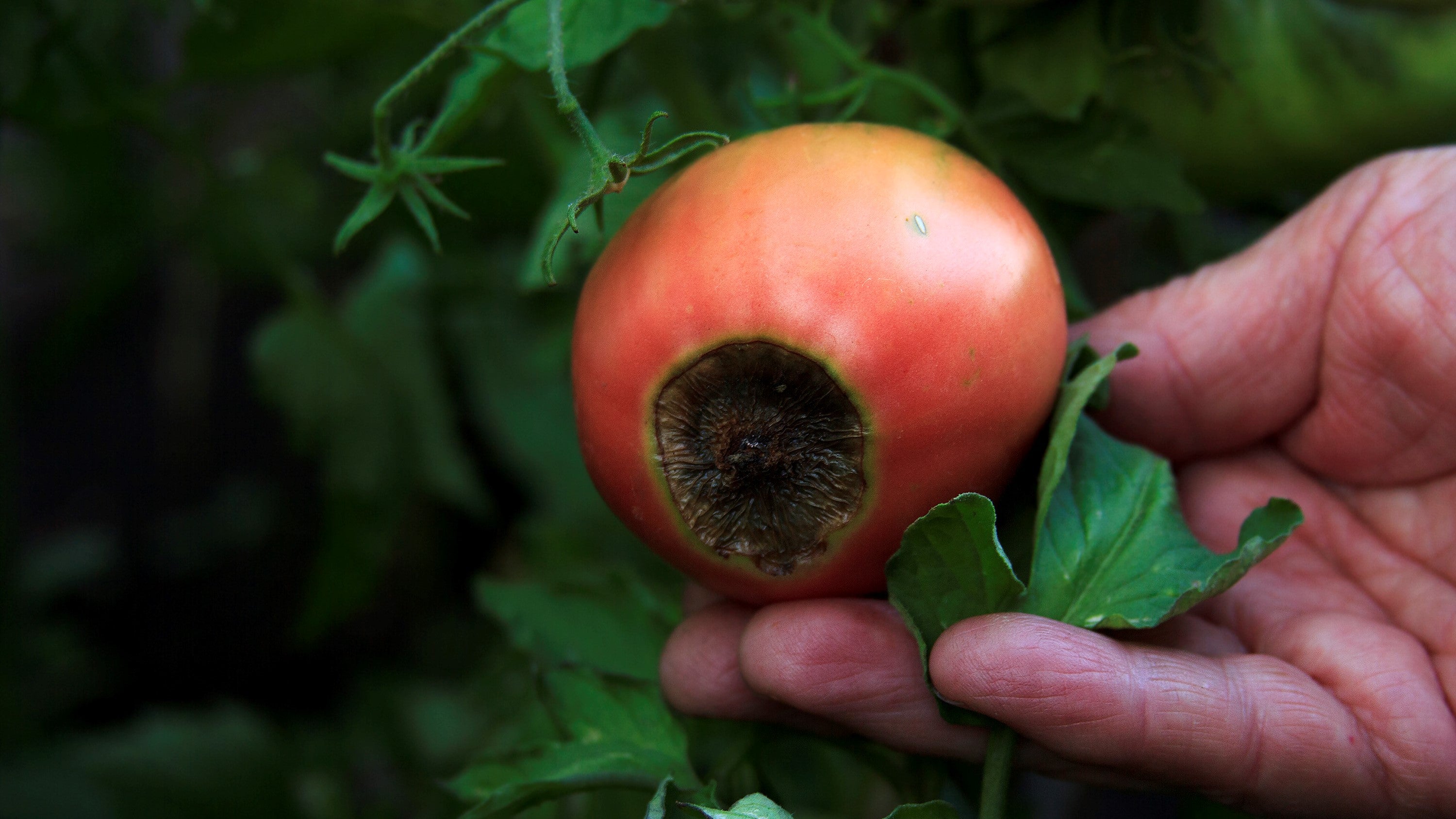
Blossom End Rot
28 Dec, 2020
The ends of the affected fruit present as a sunken, leathery, blackened scars that rot the fruit, damaging the core. In bad cases the fruit becomes inedible. While it most commonly appears on the first fruit of the season, it can happen all year round.
Blossom end rot is usually due to a lack of calcium, along with irregular watering. The rot is caused by the cells on the blossom end of the fruit dying and disrupting the natural growth process.
Prevention
Tomatoes
Make sure your tomato plants are deeply watered. If they are grown in the ground, they will need watering at least 3 times a week (possibly more, depending on the soil and temperature). Plants in pots may need watering every day over summer.
Water slowly allowing the water to sink down into the roots, rather than allowing it to run off the top of the soils surface. Add Saturaid into the soil at planting as this will help channel the water deep down into the root zone.
Feed them regularly with Kings Tomato Food to ensure each plant has the nutrients it needs for optimal health. When planting apply an application of Kings Garden Lime to add calcium to the soil.
Citrus and other fruit
Blossom end rot can also occur in other fruit, though usually only the first crop of the season is affected. To avoid blossom end rot in fruit, feed plants well with high quality liquid fertiliser such as Kings Citrus & Fruit Tree Fertiliser.
Treatment
Blossom end rot is usually a result of inconsistent or not enough water, it can also be caused by lack of Calcium.
Ensure that you are watering deeply and regularly, water slowly and ensure that the water gets deep down to the roots. Feed regularly with a specific fertiliser for the crop that you are growing. E.G Kings Liquid Tomato Food or Kings Citrus & Fruit Tree Food.
Remove any affected fruit to encourage new fruit production.
When using sprays and chemicals always read the label and follow instructions carefully.